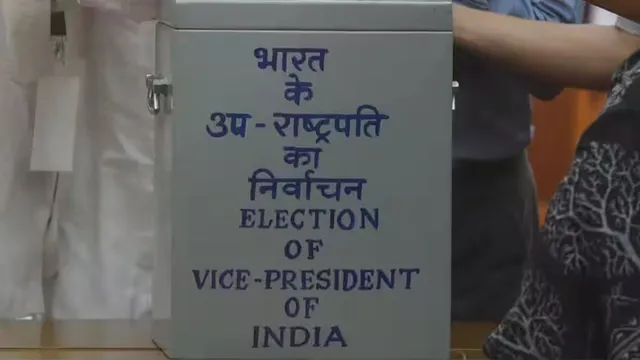- By Akansha Pandey
- Tue, 22 Jul 2025 07:16 PM (IST)
- Source:JND
In a sudden move, Jagdeep Dhankar on Monday tendered his resignation from the post of Vice President of India, citing his health. Jagdeep Dhankar was sworn in as the 14th Vice President and Rajya Sabha Speaker of India in July 2022. In his letter to President Draupadi Murmu, Dhankar wrote, "To prioritise health care and abide by medical advice, I hereby resign as the Vice President of India, effective immediately, in accordance with Article 67(a) of the Constitution."
On Monday, Jagdeep Dhankhar conducted the Rajya Sabha proceedings as the chairman, the first day of the Parliament Monsoon session, and also held a meeting of MPs in the evening. Meanwhile, President Draupadi Murmu on Tuesday accepted Dhankhar's resignation.
— Vice-President of India (@VPIndia) July 21, 2025
Jagdeep Dhankhar has become the third Vice President to resign from the post mid-term. Now the question arises, who will be the next Vice President of India, and how will they get elected?
Who Votes For The Vice Presidential Election?
According to the rules, the election for the Vice President is conducted by an electoral college consisting of members, both elected and nominated, of both Houses of Parliament - the Lok Sabha and the Rajya Sabha. The voting is done by secret ballot using the system of proportional representation by means of the single transferable vote (STV). The electors rank the candidates in order of preference.
What Is The Eligibility For The Vice President Post?
According to Articles 66 and 67 of the Indian Constitution, there are some conditions for candidates running for Vice President. Candidates must be citizens of India and must be at least 35 years of age. Also, candidates should be qualified for the election to the Rajya Sabha and should not hold any office of profit under the Central or state government.
How Vice President Of India Is Elected?
The responsibility of holding the election for the Vice President lies with the Election Commission, and it is held under their supervision. For this, they generally appoint a returning officer and a senior parliamentary official to oversee the process.
The nomination papers of a candidate must be signed by at least 20 Members of Parliament as proposers and 20 other Members of Parliament as seconders. The candidate has to deposit a single amount of Rs 15,000.
The election is held through a secret ballot. It uses the Single Transferable Vote (STV) system of proportional representation. Under this system, each MP ranks the candidates in the order of their preference (e.g. 1, 2, 3).
To win, a candidate must obtain a majority (more than 50 per cent) of the total valid votes.
If no candidate gets a majority in the counting of first preference votes, the candidate with the lowest number of votes is eliminated. His votes are then transferred to other candidates according to the next preference marked on his ballot paper. This process is repeated until one candidate achieves the required majority.
Can A Former Vice President Contest Again?
Many people might have this question in their mind whether a former Vice-President can contest for the post of Vice-President again; the answer to this is yes. According to the Indian Constitution, there is no limit on the number of terms a person can serve as Vice-President. Any former Vice-President can contest for the post of Vice-President whenever he wants, whether immediately after completing a term or after a gap.
How Is It Different From Presidential Elections?
The election of the President is conducted by the elected members of both the Houses of Parliament and the elected members of the state and central government legislatures. While the election of the Vice President is conducted by an electoral college consisting of members, both elected and nominated, of both Houses of Parliament - the Lok Sabha and the Rajya Sabha. The state legislatures have no participation in it.
In Presidential elections, the value of votes of MPs and State Legislative Assembly Members varies on the basis of the population of their respective states, which is calculated on the 1971 census, whereas in the Vice President election, the value of every vote is equal, as all are elected members of the Parliament.

